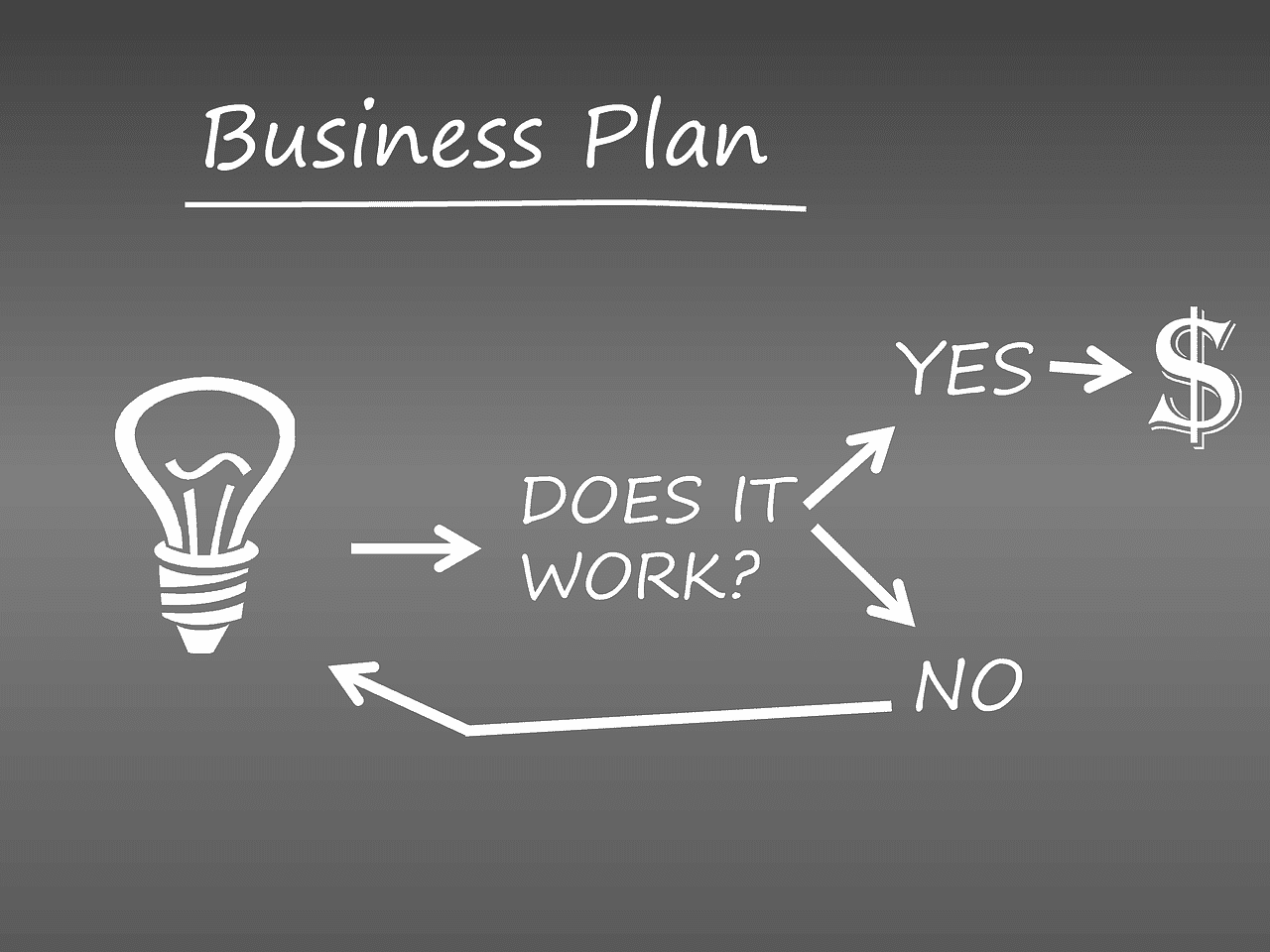Disclosure:
Some of the links on this website are affiliate links, which means that if you click on one of the links and sign up or make a purchase, we may earn a small commission at no additional cost to you. This commission helps support the maintenance and operation of this site.
We only recommend products or services that we believe will provide value to our readers. Our opinions and recommendations are based on our own research and experiences, and we strive to offer honest and unbiased content.
Please note that your support through these affiliate links is greatly appreciated, as it helps us continue to provide quality content and resources.
Thank you for your support!
An Overview
Business model-based entrepreneurship refers to the type of business an entrepreneur chooses to start, defined by how the business creates, delivers, and captures value. Different models have varying requirements, risks, and profit potentials. In this article, we will explore several common business models, examples of businesses you can start within each, and the pros and cons, along with insights into profit potential.

1. Small Business Entrepreneurship
Description:
Small business entrepreneurship involves starting a local or small-scale business to meet community needs. These businesses typically have fewer than 100 employees and are often independently owned and operated. They may focus on providing goods or services to a local customer base.
Examples of Businesses:
- Local bakery or café
- Hair salon or barbershop
- Landscaping or handyman services
- Boutique clothing or specialty shops
- Independent restaurants or food trucks
Pros:
- Lower barrier to entry: Starting a small business often requires less capital than other models.
- Autonomy: Entrepreneurs have complete control over the business, from decision-making to operations.
- Local impact: These businesses often play a critical role in the local economy and community.
Cons:
- Limited growth potential: Small businesses tend to have limited reach, mostly serving local or regional customers.
- High competition: Many small businesses face stiff competition from larger corporations or franchises.
- Operational challenges: Managing every aspect of the business can be overwhelming, especially for solo entrepreneurs.
Insights into Profits:
Small businesses usually have steady, though modest, profit margins. Success depends on the business’s ability to attract and retain customers, with profit potential ranging from a few thousand dollars annually for a sole proprietor to six or seven figures for well-established businesses.
2. Scalable Startup Entrepreneurship
Description:
Scalable startups are designed to grow quickly and achieve significant market penetration. These businesses often leverage technology to disrupt industries and scale rapidly. The aim is usually to achieve exponential growth, attract investors, and eventually exit via acquisition or IPO.
Examples of Businesses:
- Tech startup developing mobile apps or software
- Fintech solutions such as digital payment systems
- E-commerce platforms or online marketplaces
- AI-based services or SaaS products
Pros:
- High growth potential: Scalable startups have the potential to grow into large companies.
- Attractive to investors: Venture capitalists and angel investors are often interested in funding high-growth startups.
- Innovative impact: Startups can disrupt traditional industries with new technologies or business models.
Cons:
- High risk: The failure rate for startups is high due to market volatility and competition.
- Intensive capital needs: Significant funding is often required to achieve growth, which can mean giving up equity.
- Time-intensive: Startup founders typically face intense workloads, with long hours and high pressure.
Insights into Profits:
Scalable startups have high-profit potential if successful, with many tech startups generating millions or even billions in revenue. However, most startups do not turn a profit in their early years, as revenue is reinvested to fuel growth.
3. Social Entrepreneurship
Description:
Social entrepreneurship aims to address social, environmental, or humanitarian issues through innovative business solutions. Unlike traditional businesses, the primary goal is not profit but to create a positive impact while being financially sustainable.
Examples of Businesses:
- Fair-trade coffee company
- Eco-friendly packaging or sustainable fashion brands
- Nonprofit or for-profit businesses addressing homelessness or clean energy
- Social impact consulting
Pros:
- Purpose-driven: Entrepreneurs can make a meaningful impact on society while running a profitable business.
- Attractive to conscious consumers: More consumers are looking for brands that align with their values.
- Potential for grants and donations: Many social enterprises can access funding that for-profit businesses cannot.
Cons:
- Lower profitability: Since social goals are prioritized, profit margins may be smaller than those of other businesses.
- Funding challenges: It can be challenging to balance profitability with social goals, especially when seeking investors.
- Market challenges: Social entrepreneurs need to be clear about their impact and differentiate their business in a competitive landscape.
Insights into Profits:
Profits in social entrepreneurship can vary significantly depending on the industry and business model. Some companies achieve modest profits while maintaining their social mission, while others achieve high financial success by tapping into the growing market of ethically conscious consumers.
4. Franchise Entrepreneurship
Description:
Franchise entrepreneurship involves buying the rights to operate a business under an established brand. The franchisor provides support, marketing, and a proven business model, while the franchisee manages day-to-day operations.
Examples of Businesses:
- Fast-food franchises like McDonald’s, KFC, Subway
- Fitness franchises like Anytime Fitness or Planet Fitness
- Cleaning or maintenance service franchises
- Retail franchises such as 7-Eleven or The UPS Store
Pros:
- Established brand: Franchises offer instant brand recognition, reducing the need for marketing from scratch.
- Proven business model: Entrepreneurs benefit from an existing blueprint for success.
- Franchisor support: Franchisors often provide ongoing training, marketing, and operational support.
Cons:
- High upfront costs: Franchise fees and startup costs can be expensive, often ranging from tens of thousands to millions.
- Lack of autonomy: Franchisees must adhere to strict guidelines set by the franchisor, limiting creativity.
- Ongoing fees: Franchisees are typically required to pay royalties or ongoing fees to the franchisor.
Insights into Profits:
Franchises can be highly profitable if located in a strong market with high customer demand. Franchise owners can generate a steady income, with profits depending on the brand, location, and operational efficiency.

5. Large Company Entrepreneurship (Intrapreneurship)
Description:
Intrapreneurship involves fostering innovation within a large, established company. Employees act as entrepreneurs by developing new products, services, or business models under the umbrella of the corporation.
Examples of Businesses:
- Product innovation teams at companies like Google, Microsoft, or Apple
- Corporate R&D departments creating new technologies
- Marketing teams developing disruptive strategies for new markets
- Spin-off businesses from larger companies
Pros:
- Access to resources: Intrapreneurs have access to the parent company’s financial, technical, and human resources.
- Reduced risk: Since the parent company absorbs most of the risk, intrapreneurs can focus on innovation without the pressure of funding.
- Support network: Intrapreneurs can rely on established systems, mentorship, and infrastructure.
Cons:
- Limited ownership: Intrapreneurs may not retain ownership over their innovations, as the parent company typically controls intellectual property.
- Corporate red tape: Innovation can be slowed by the bureaucratic structure of large companies.
- Less entrepreneurial freedom: Intrapreneurs often face restrictions or oversight from upper management.
Insights into Profits:
Intrapreneurs do not directly profit from their innovations in the way that traditional entrepreneurs might, but they can receive bonuses, promotions, and other forms of compensation. The parent company, however, benefits from the profit generated by successful innovations.
Business model-based entrepreneurship provides diverse pathways for aspiring entrepreneurs, from running a small local business to building a scalable startup or creating social impact. Each business model offers unique opportunities, risks, and profit potential. Small business owners may enjoy steady, long-term profits but face limits on growth, while scalable startups may offer exponential returns but come with high risks. Franchise businesses provide stability but lack creative freedom, and social entrepreneurs can find purpose-driven success, though often at lower margins. By understanding the different business models and their inherent challenges, entrepreneurs can choose the path that best aligns with their goals, skills, and risk tolerance.
FAQ on Business Model-Based Entrepreneurship
1. What is business model-based entrepreneurship?
Business model-based entrepreneurship refers to the type of business an entrepreneur chooses to establish, based on how it creates, delivers, and captures value. Different models cater to various market needs, have unique growth potential, and come with their own sets of risks and opportunities.
2. What are the most common business models for entrepreneurship?
The most common business models include:
- Small Business Entrepreneurship: Local, independent businesses serving a small or regional market.
- Scalable Startup: Businesses designed for rapid growth, often leveraging technology.
- Social Entrepreneurship: Businesses that prioritize social or environmental impact alongside profitability.
- Franchise Entrepreneurship: Owning and operating a business under an established brand.
- Intrapreneurship: Innovating within a large company, often to develop new products or business models.
3. What are examples of businesses I can start under these models?
Here are a few examples for each business model:
- Small Business: Restaurants, salons, local retail stores, or home-based services like tutoring or cleaning.
- Scalable Startup: App development, e-commerce platforms, SaaS companies, or digital marketing agencies.
- Social Enterprise: Fair-trade coffee businesses, eco-friendly clothing brands, or community-focused non-profits.
- Franchise: Fast-food chains like McDonald’s, fitness centers like Anytime Fitness, or cleaning service franchises.
- Intrapreneurship: Leading product innovation teams within companies like Google, Apple, or other major corporations.
4. What are the advantages of business model-based entrepreneurship?
The main advantages include:
- Diverse options: Entrepreneurs can choose a model that aligns with their goals, risk tolerance, and resources.
- Scalability: Depending on the model, some businesses can be scaled for rapid growth.
- Flexibility: Entrepreneurs can explore different markets, industries, and niches based on the business model they choose.
- Profit potential: Models like scalable startups and franchises offer significant profit opportunities when executed well.
5. What are the risks of business model-based entrepreneurship?
Each business model comes with its own risks:
- Small Business: Limited growth potential and heavy competition from larger companies.
- Scalable Startup: High risk of failure and significant capital needs for growth.
- Social Entrepreneurship: Balancing profit and social impact can be challenging, and profits may be lower.
- Franchise: High upfront costs and a lack of autonomy due to franchisor control.
- Intrapreneurship: Limited ownership of innovations and restrictions within a corporate environment.
6. Which business model is the easiest to start?
Small Business Entrepreneurship is generally the easiest to start in terms of accessibility. It typically requires less capital compared to scalable startups or franchises and allows for autonomy in operations. However, it may not offer the same growth potential as other models.
7. How can I fund my business under each model?
- Small Business: Personal savings, small business loans, or crowdfunding.
- Scalable Startup: Angel investors, venture capital, or startup incubators.
- Social Entrepreneurship: Grants, impact investors, or hybrid funding (a mix of for-profit and nonprofit revenue).
- Franchise: Franchise loans, personal savings, or partnership investments.
- Intrapreneurship: Typically funded internally by the parent company, so external funding is not necessary.
8. How long does it take to see profits in business model-based entrepreneurship?
The timeline for profitability varies:
- Small Businesses: Typically 1-2 years, depending on market demand and management.
- Scalable Startups: May take several years, as revenue is often reinvested into growth.
- Social Enterprises: Varies depending on impact goals and revenue sources, but can take 2-3 years to become sustainable.
- Franchise: Depending on the brand and location, franchises can see profits within 1-2 years.
- Intrapreneurship: This depends on the specific innovation or product, but profits go to the parent company, not directly to the intrapreneur.
9. What are the most profitable business models?
Scalable startups and franchises tend to offer the highest profit potential due to their ability to grow quickly and expand into multiple markets. However, they also come with higher risks and capital requirements. Small businesses can also be highly profitable, but typically within a more limited scope and regional market.
10. What resources can I use to explore business model-based entrepreneurship?
- Books: “Business Model Generation” by Alexander Osterwalder and “The Lean Startup” by Eric Ries.
- Online platforms: Business development websites like SCORE, local small business information centers, or online business model tools like the Business Model Canvas.
- Mentorship programs: Consider networking with industry experts, joining entrepreneurial groups, or enrolling in business incubators to gain guidance.
11. Can I combine different business models?
Yes! Some entrepreneurs successfully combine multiple business models to create hybrid strategies. For example, a social entrepreneur might run a scalable startup that leverages technology to address environmental challenges while growing rapidly. Similarly, a small business owner could franchise their business after achieving success locally.
12. What skills do I need to succeed in business model-based entrepreneurship?
Key skills include:
- Strategic thinking: Understanding which model fits best for your business idea and long-term goals.
- Risk management: Each model comes with its own risks, so being able to evaluate and manage these is essential.
- Leadership and management: Managing a team, business operations, and scaling.
- Innovation: Especially important for scalable startups and intrapreneurship, the ability to innovate is key to success.
This FAQ helps clarify key aspects of business model-based entrepreneurship, allowing you to make an informed decision on the best path to take for your venture.






Leave a Reply